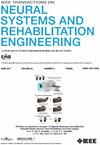Enhancing and Optimizing User-Machine Closed-Loop Co-Adaptation in Dynamic Myoelectric Interface
IF 4.8
2区 医学
Q2 ENGINEERING, BIOMEDICAL
IEEE Transactions on Neural Systems and Rehabilitation Engineering
Pub Date : 2025-04-07
DOI:10.1109/TNSRE.2025.3558687
引用次数: 0
Abstract
Co-adaptation interfaces, developed through user-machine collaboration, have the capacity to transform surface electromyography (sEMG) into control signals, thereby enabling external devices to facilitate or augment the sensory-motor capabilities of individuals with physical disabilities. However, the efficacy and reliability of myoelectric interfaces in untrained environments over extensive spatial range have not been thoroughly explored. We propose a user-machine closed-loop co-adaptation strategy, which consists of a multimodal progressive domain adversarial neural network (MPDANN), an augmented reality (AR) system and a scenario-based dynamic asymmetric training scheme. MPDANN employs both sEMG and Inertial Measurement Unit (IMU) data using dual-domain adversarial training, with the aim of facilitating knowledge transfer and enabling multi-source domain adaptation. The AR system allows users to perform 10 holographic object repositioning tasks in a stereoscopic mixed reality environment using a virtual prosthesis represented as an extension of the residual limb. The scenario-based dynamic asymmetric training scheme, which employs incremental learning in MPDANN and incremental training in the AR system, enables the continuous updating and optimization of the system parameters. A group of non-disable participants and two amputees performed a five-day offline data collection in multiple limb position conditions and a five-day real-time holographic object manipulation task. The average completion rate for subjects utilizing MPDANN reached动态肌电界面中用户-机闭环自适应的增强与优化。
通过用户-机器协作开发的共同适应接口能够将表面肌电图(sEMG)转换为控制信号,从而使外部设备能够促进或增强身体残疾个体的感觉-运动能力。然而,在未经训练的环境中,肌电界面在广泛空间范围内的有效性和可靠性尚未得到充分的探讨。提出了一种由多模态渐进域对抗神经网络(MPDANN)、增强现实(AR)系统和基于场景的动态不对称训练方案组成的用户-机器闭环自适应策略。MPDANN使用双域对抗训练同时使用表面肌电信号和惯性测量单元(IMU)数据,目的是促进知识转移和实现多源域适应。AR系统允许用户在立体混合现实环境中使用虚拟假肢执行10个全息物体重新定位任务,虚拟假肢表示为残肢的延伸。基于场景的动态非对称训练方案,在MPDANN中采用增量学习,在AR系统中采用增量训练,实现了系统参数的不断更新和优化。一组健全参与者和两名截肢者进行了为期五天的多肢体位置离线数据收集和为期五天的实时全息物体操作任务。使用MPDANN的受试者在最后一天的平均完成率为83:37%±2:50%,与其他组相比有显著改善。这些发现为通过用户-机器闭环共适应设计具有跨场景识别的肌电界面提供了一种新的方法。
本文章由计算机程序翻译,如有差异,请以英文原文为准。
求助全文
约1分钟内获得全文
求助全文
来源期刊
CiteScore
8.60
自引率
8.20%
发文量
479
审稿时长
6-12 weeks
期刊介绍:
Rehabilitative and neural aspects of biomedical engineering, including functional electrical stimulation, acoustic dynamics, human performance measurement and analysis, nerve stimulation, electromyography, motor control and stimulation; and hardware and software applications for rehabilitation engineering and assistive devices.

 求助内容:
求助内容: 应助结果提醒方式:
应助结果提醒方式:


